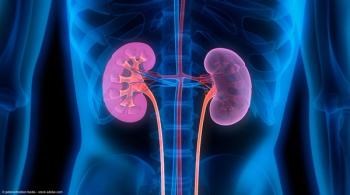
PFUI treatment has benefits despite low initial success
Early endoscopic realignment of pelvic fracture urethral injuries is associated with a low initial success rate, but the procedure does not hinder the success of subsequent urethroplasty and has other merits that may make it worthwhile, according to urologists from the University of Washington, Seattle.
Boston-Early endoscopic realignment (EER) of pelvic fracture urethral injuries (PFUI) is associated with a low initial success rate, but the procedure does not hinder the success of subsequent urethroplasty and has other merits that may make it worthwhile, according to urologists from the University of Washington, Seattle.
At the AUA annual meeting in Boston, they presented findings from an updated review of their experience with EER. The retrospective study included 32 patients who had undergone EER between 2004 and 2016 for a pelvic fracture urethral injury that was secondary to blunt pelvic trauma. The findings were subsequently published online in
Success, defined as having no secondary procedure or the ability to pass a cystoscope across the area of injury or surgical anastomosis, was achieved in only three patients (9%). An earlier analysis performed in 2011 that included 19 patients found a success rate of 21%.
Read:
In the updated series, two patients were lost to follow-up and one patient who failed EER was managed with a suprapubic tube. Of the 26 remaining patients, 25 eventually had a successful outcome with either secondary dilation/direct visual internal urethrotomy (DVIU) or urethroplasty following failed dilation/DVIU.
“Whether surgeons should perform EER or place a suprapubic tube and plan delayed treatment for pelvic fracture urethral injuries is a topic of ongoing debate. Surgeons who are opposed to EER argue that it is not worth doing considering that it is unlikely to be successful,” said Paul H. Chung, MD, fellow in genitourinary trauma and reconstructive surgery at the University of Washington Medical Center.
EER improves safety of secondary surgery
“We feel, however, that EER may have benefits compared with suprapubic tube placement,” added Dr. Chung, who worked on the study with Bryan B. Voelzke, MD, MS, and Hunter B. Wessells, MD. “EER does not limit the orthopedic surgeon’s options for pelvic fracture repair. In addition, we believe the risk of infection may be lower after EER, and that is particularly important in patients who are undergoing open repair with metal plating for the pelvic fracture.
“Furthermore, our anecdotal experience is that EER improves the safety and ease of secondary urethral surgery that is inevitably needed by most patients. For these reasons, EER is pursued in patients who present at our Level 1 trauma center with pelvic fracture urethral injury, and we encourage surgeons to refer patients with PFUIs to a tertiary center for management.”
Mean time to EER for the 32 patients was 2 days (range, 0 to 6 days). The EER procedure was performed simultaneously with another surgery in 72% of cases and had a median operative time of 38 minutes. Median follow-up after EER was 26 months (range, 0 to 105 months).
Also see -
The 29 patients in whom the early endoscopic realignment was not successful included one who was lost to follow-up and nine who underwent endoscopic management with dilatation/DVIU, which was successful in two patients (22%). Urethroplasty was performed in 24 patients, including after failed dilation/DVIU in six patients and after failed EER in 18 patients, and it was successful in 23 patients (96%).
Dr. Chung acknowledged that the potential benefits of EER for reducing infection risk and enabling secondary surgery are based on anecdotal impressions and also debatable. Data on these issues, however, may be evaluated in a new clinical trial (NCT03195179).
He noted that the present analysis did not investigate incontinence and erectile dysfunction rates because information on those outcomes was not consistently available for the patients in the series. Dr. Chung mentioned that complications have been reported after EER, including seeding of the pelvis with fluid, causing infection and complete disruption of the urethra.
“We believe, however, that the risk of causing a complete urethral disruption is avoided if the procedure is performed under cystoscopic guidance and fluoroscopy, and no patient in our series developed a pelvic infection,” Dr. Chung said.
More from Urology Times:
Newsletter
Stay current with the latest urology news and practice-changing insights — sign up now for the essential updates every urologist needs.


















